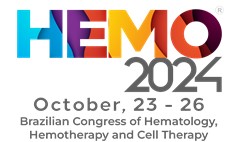
The incidence and long-term clinical outcome of Hodgkin Lymphoma (HL) vary according to different patient, disease-related factors and geographic location. There have been dramatic changes in the staging and treatment of Hodgkin's Lymphoma (HL) over the last two decades. 75%‒80% of patients with classical HL can achieve long-term remission with contemporary risk-adapted frontline therapy in high income countries. However, 25%‒30% of patients with advanced-stage disease experience relapse or have primary refractory disease. For patients with Relapsed/Refractory HL (rrHL), salvage therapy followed by Stem Cell Transplantation (SCT) is the current standard of care. Despite the significant improvement in the diagnosis, staging, the use of risk-adapted approach, introduction of novel agents (CPI, Bv) in frontline setting, the use of post-transplant consolidation maintenance therapy, 50% of patients still experience disease progression, with poor prognosis and shortened survival. Most of the real-world data regarding treatment pathways and clinical outcomes in relapsed refractory HL published from high income countries in Euro and North America. There is a limited data on clinical characteristics and clinical outcomes of HL in low-resourced countries. Very few studies published so far with limited number of patients, single-center experiences, poor data quality, or lack of comprehensive information on patients, treatment, or clinical outcomes. In my presentation, we will highlight the disease entity from diagnosis, staging to treatment options worldwide; the availability and the use of novel agents in frontline and in relapsed refractory setting, availability of stem cell transplantation procedures and compare the clinical outcomes of HL patients in both high- and low-resourced countries.






